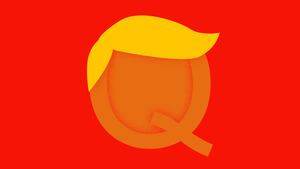So you’re saying there’s a chance? Call it “wishcasting” if you like, but for the first time in a long time, Republicans are starting to see the slimmest ray of hope in midterm polling results.
The most conclusive evidence is in the U.S. Senate races that could determine control of the upper chamber.
In Nevada, Republican challenger Adam Laxalt narrowly leads Sen. Catherine Cortez Masto. After getting off to a rough start in Wisconsin, Sen. Ron Johnson is down just 1 point to Lt. Gov. Mandela Barnes. In Ohio, Republican J.D. Vance holds a slim lead over Rep. Tim Ryan. And in Georgia, Republican Herschel Walker is still holding his own against Sen. Raphael Warnock.
This polling indicates that Republicans still have a shot at taking the Senate.
Meanwhile, a new Washington Post/ABC News poll that was released on Sunday is further fueling Republicans’ optimism in the House. According to the survey memo, “In the midterm election ahead, registered voters divide 47-46 percent between the Republican and the Democratic candidate in their House district, historically not enough to prevent typical first-midterm losses. And one likely voter model has a 51-46 percent Republican-Democratic split.”
Of course, what really matters are the competitive districts, and (according to the WaPo/ABC poll) in those districts, “...registered voters favor Republican candidates by a wide 55-34 percent–nearly as big as the Republican lead in solid GOP districts (+24 points).”
The usual caveats apply (polls are a snapshot, polls can be wildly wrong, etc.), but more to the point: It’s not clear whether this poll is an outlier or a harbinger of things to come.
Although Republicans have consistently been favored to take back the House, the latest bit of good polling news does not jibe with other recent professional surveys we have seen, including one from CBS News. Still, for Republicans who are desperate for good news, it’s any port in the storm.
I reached out to Simon Rosenberg, president of the progressive think tank NDN and a shrewd political strategist who was ahead of the curve in first spotting the red wave looking more like a trickle this summer. He urged caution. “Two-thirds of the new polls from last week had Dems gaining ground,” Rosenberg said. He also pointed out that Joe Biden’s approval rating just reached its highest point all year.
He’s right, but anybody who has been burned by polls in the past should be chastened by the possibility that a) the polls are tightening as we get closer to election day, or b) pollsters are guessing incorrectly regarding midterm turnout. According to Politico’s Steven Shepard, “Pollsters know they have a problem. But they aren’t sure they’ve fixed it in time for the November election.”
The Trafalgar Group’s Robert Cahaly (whom I have known for more than two decades—although we haven’t spoken in years) recently declared on Fox News that “Republican turnout will exceed even what we predict.” Cahaly, who uses unorthodox methods for polling, correctly predicted the exact number of electoral votes both Donald Trump and Hillary Clinton received in 2016 (he was not so accurate in 2020).
The shy Republican voter theory (which holds that Republicans are less likely to talk to pollsters, and thus, are under-represented in the polls) is not something to be casually dismissed. But when actual voting happened this year, the “hidden vote” belonged to Democrats—who have overperformed polling expectations.
Along those lines, Democratic strategist Tom Bonier of TargetSmart (someone who has been critical of Trafalgar’s methodology) wrote that in the wake of the Dobbs Supreme Court decision that overturned Roe v. Wade, he is seeing an enormous surge of women registering to vote. What Bonier’s analysis suggests is that the electorate could be becoming more Democratic and more female.
Just as Cahaly’s “shy Republican” voter is something to monitor, Bonier’s theoretical gender gap could plague pollsters who are creating their models based on other assumptions.
If abortion turns out to be the surprise defining issue of 2022, it’s not showing up in today’s polls—which, I guess, is sort of the point. According to that Washington Post/ABC News poll I mentioned above, “84 percent call the economy a top issue in their vote for Congress and 76 percent say the same about inflation. Many fewer, 62 percent, call abortion a top issue.” Crime also ranked ahead of abortion on that poll, and Republicans lead on the issue by 14 points.
What is more, former White House press secretary Jen Psaki seemed to concede Democrats’ disadvantage regarding the prioritization of issues on Sunday’s Meet The Press, noting that “the economy is hanging over everything” and that “crime is a huge vulnerability for Democrats.”
We are left with a pseudo-Schrödinger’s campaign. It’s too early to know if this is the first sign of something big or just some weird anomaly that Republicans were desperate to believe.
If you told Democrats a few months ago that just six weeks out from election day this would be a competitive election, they would have been ecstatic. But coming on the heels of revised expectations, it may seem like a setback that Republicans are now getting even a glimmer of good news.








